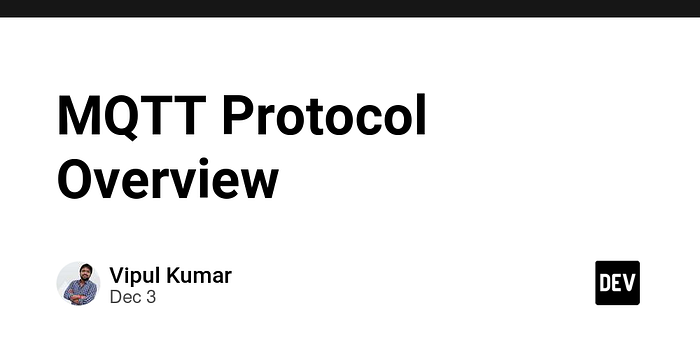MQTT Protocol Overview
🌟 Discover how MQTT (Message Queuing Telemetry Transport) is designed for efficient, reliable, and lightweight communication in IoT systems. #internet #networking #network-protocol #KnowledgeBytesByVipul

📜 Definition — MQTT, or Message Queuing Telemetry Transport, is a lightweight, publish-subscribe network protocol designed for machine-to-machine communication, particularly in the Internet of Things (IoT).
🔄 Publish-Subscribe Model — MQTT operates on a publish-subscribe model, where devices (clients) communicate through a central broker, allowing for efficient data distribution without direct connections between devices.
📈 Scalability — The protocol is highly scalable, capable of connecting millions of IoT devices, making it suitable for large-scale deployments.
🔒 Security — MQTT supports security features such as Transport Layer Security (TLS) and various authentication mechanisms to ensure secure data transmission.
⚡ Efficiency — Designed to be lightweight, MQTT minimizes bandwidth usage and processing overhead, making it ideal for devices with limited resources.
History and Development
📅 Origin — MQTT was developed in 1999 by Andy Stanford-Clark and Arlen Nipper for monitoring oil pipelines over satellite links, which required a protocol with minimal bandwidth usage.
🏢 Standardization — In 2013, IBM submitted MQTT to the OASIS specification body, leading to its standardization as an open protocol.
🔄 Evolution — The protocol has evolved over time, with version 5.0 released in 2019, introducing new features and improvements.
🌐 Adoption — MQTT is now widely adopted in various industries, particularly in IoT applications, due to its efficiency and scalability.
📜 Naming — Originally an acronym for MQ Telemetry Transport, MQTT is now simply known by its initials, reflecting its broader application beyond telemetry.
Key Features
🔄 Bi-directional Communication — MQTT supports two-way communication, allowing devices to send and receive messages efficiently.
📊 Quality of Service — The protocol offers three levels of Quality of Service (QoS) to ensure reliable message delivery: at most once, at least once, and exactly once.
🗂️ Retained Messages — Brokers can store the last message on a topic, ensuring new subscribers receive the most recent data immediately upon subscribing.
🛡️ Last Will and Testament — Clients can specify a message to be sent by the broker if they unexpectedly disconnect, aiding in failure detection.
🔍 Topic Hierarchy — MQTT uses a hierarchical topic structure, allowing for flexible and organized message filtering and distribution.
Applications and Use Cases
🏠 Smart Homes — MQTT is used in smart home systems for controlling and monitoring devices like lights, thermostats, and security systems.
🚗 Automotive — The protocol is employed in connected car systems for real-time data exchange between vehicles and cloud services.
🏭 Industrial IoT — MQTT facilitates communication in industrial settings, enabling efficient monitoring and control of machinery and processes.
🌐 Cloud Services — Many cloud platforms, such as AWS and Azure, support MQTT for IoT data transmission and device management.
📡 Remote Monitoring — The protocol is ideal for remote monitoring applications, such as environmental sensors and health monitoring devices.
Originally published at https://dev.to on December 3, 2024.
